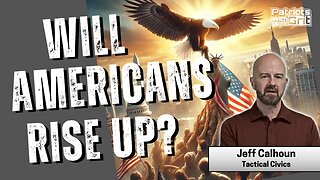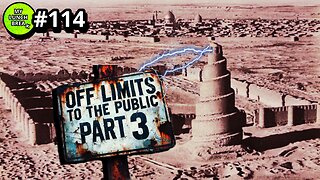Premium Only Content

Egyptian Mythology: The Ten Most Famous Gods of Egypt
Egyptian Mythology: The Ten Most Famous Gods of Egypt
#egyptianmythology #egyptiangods #mythology
If you like Egyptian mythology, we recommend the book "Egyptian Mythology: A Guide to the Gods, Goddesses, and Traditions of Ancient Egypt" Get it here: https://rb.gy/elvy6
00:05 Ra (Re):
Ra, also known as Re, was the supreme sun god in Egyptian mythology. He was often depicted with a falcon head and a sun disk on top, which represented the sun itself. As the sun god, Ra was believed to be the creator of the world and all living beings. He sailed across the sky during the day in his solar barque, representing the cycle of life, death, and rebirth. At night, Ra would travel through the treacherous underworld, facing various challenges and threats, symbolizing the darkness and dangers of the afterlife. By successfully completing this journey, he would rise again at dawn, representing the promise of renewal and resurrection.
00:51 Isis:
Isis, the goddess of motherhood, magic, and fertility, was one of the most revered and beloved deities in ancient Egypt. She was the wife of Osiris and the mother of Horus. Isis played a significant role in both the mythological and religious aspects of ancient Egyptian culture. She was often depicted wearing a throne or a headdress shaped like a throne, symbolizing her role as the divine queen and protector of the pharaoh.
01:29 Osiris:
Osiris was the god of the afterlife, death, and resurrection. He was one of the central figures in Egyptian mythology, as his story represents the cycle of life and death. Osiris was the husband of Isis and the father of Horus. According to the myth, he was betrayed and murdered by his brother Set (or Seth), which led to his association with the underworld. Osiris became the ruler of the afterlife and the judge of souls. He symbolized rebirth and eternal life, making him a crucial deity in funerary rituals and beliefs about the afterlife.
02:10 Anubis:
Anubis, often depicted with the head of a jackal, was the god of mummification and the protector of the dead. He played a crucial role in the process of embalming and preserving the bodies of the deceased for the journey to the afterlife. Anubis was believed to oversee the weighing of the heart ceremony, where the hearts of the deceased were weighed against the feather of Ma'at (the goddess of truth and justice) to determine the worthiness of the individual's soul. He guided the souls through the perilous paths of the underworld and provided protection from malevolent forces.
2:48 Horus:
Horus was a key god associated with the sky and kingship. He was often depicted with the head of a falcon, representing his connection to the sky and his keen vision. Horus was considered the son of Isis and Osiris, and he was believed to be the rightful heir to the throne of Egypt. As such, he was the embodiment of divine kingship, and the reigning pharaoh was seen as the earthly representation of Horus.
3:28 Bastet:
Bastet, often depicted with the head of a lioness or a domestic cat, was the goddess of home, fertility, and protection. She was known for her nurturing and gentle aspects, as well as her fierce and protective nature. Bastet was associated with domesticity, music, dance, and joy. As a protective goddess, she was invoked to ward off evil spirits and disease.
3:59 Thoth:
Thoth, depicted with the head of an ibis or sometimes as a baboon, was the god of wisdom, writing, and knowledge. He played a central role in Egyptian mythology as the mediator between good and evil, order and chaos. Thoth was considered the scribe of the gods, responsible for maintaining divine knowledge and recording the events of the universe. He was associated with magic, mathematics, and science.
4:36 Sekhmet:
Sekhmet, the lioness goddess of war and healing, was a formidable and powerful deity. She was believed to be the daughter of Ra and served as a warrior goddess, protecting the pharaoh and the Egyptian people from enemies. Sekhmet was associated with the scorching heat of the sun, and she was often invoked for her protective qualities. However, she was also associated with disease and plagues, and her wrath could bring destruction. To appease her anger, festivals and rituals were held in her honor.
5:12 Sobek:
Sobek, often depicted as a crocodile or as a man with the head of a crocodile, was the god associated with the Nile River, fertility, and military prowess. He was considered a protective deity, safeguarding against the dangers of the Nile, including floods and the deadly creatures within its waters. Sobek was also associated with the military strength of the pharaoh and was invoked for his ferocity and power.
5:40 Hathor:
Hathor, depicted as a woman with cow horns, was the goddess of love, beauty, and joy. She was a benevolent and nurturing deity, often associated with motherhood and fertility. Hathor was believed to welcome the deceased into the afterlife and provided comfort and happiness.
-
 34:27
34:27
The Connect: With Johnny Mitchell
13 hours ago $7.41 earnedCan He Stop Them? Inside Trumps War On Mexican Drug Cartels & The New Era Of Mexican Organized Crime
17.4K4 -
 2:33:15
2:33:15
Tundra Tactical
5 hours ago $5.97 earnedLuis Valdes Of GOA Joins The Worlds Okayest Firearms Live Stream!!!
19.2K -
 1:03:41
1:03:41
Man in America
14 hours agoAre Trump & Musk the COUNTER-ELITES? w/ Derrick Broze
53K31 -
 3:45:08
3:45:08
DLDAfterDark
5 hours ago $7.62 earnedDLD Live! SHTF Handguns! Which Would You Choose?
29.6K2 -
 1:50:38
1:50:38
Mally_Mouse
8 hours agoSaturday Shenanigans!! - Let's Play: Mario Party Jamboree
44.6K -
 1:13:00
1:13:00
Patriots With Grit
12 hours agoWill Americans Rise Up? | Jeff Calhoun
32.9K13 -
 14:55
14:55
Exploring With Nug
12 hours ago $10.50 earnedWe Found Semi Truck Containers While Searching for Missing Man!
50.7K7 -
 27:57
27:57
MYLUNCHBREAK CHANNEL PAGE
20 hours agoOff Limits to the Public - Pt 3
108K62 -
 38:07
38:07
Michael Franzese
12 hours agoLeaving Organized Crime and Uncovering Mob in Politics: Tudor Dixon and Michael Franzese
91.6K15 -
 2:42:54
2:42:54
Jewels Jones Live ®
2 days agoAMERICA IS BACK | A Political Rendezvous - Ep. 111
73.1K48